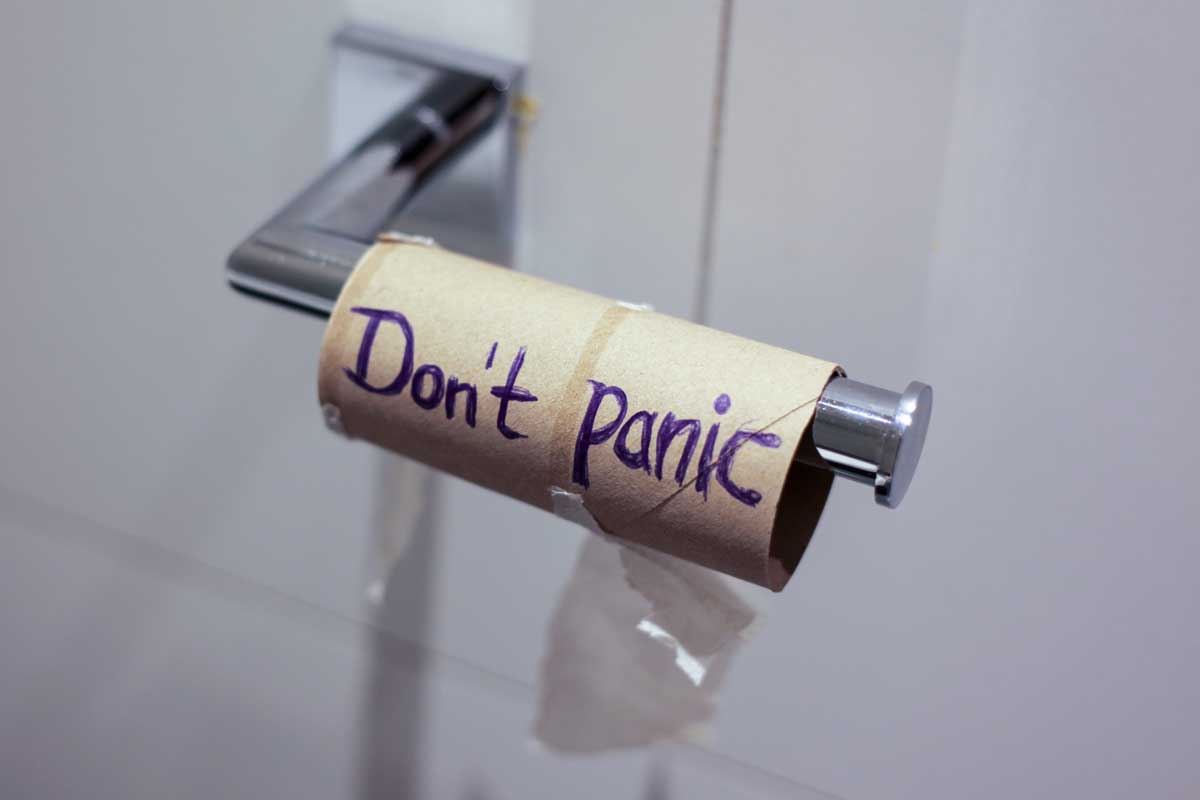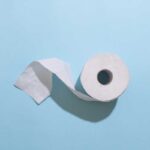
We Flush 27,000 Trees Every Day. It’s Possible To Live Without Toilet Paper Forever
- Thomas Nelson
- October 23, 2021
- Sustainable Living
- 0 Comments
There are some mornings I find myself staring at the toilet paper roll hanging off the wall, lost deep in thought, wondering about what it took to make that toilet paper. How much water was needed? How many trees? What’s the carbon footprint of trucking it to the store, and then from the store to my home? And what’s the impact of dealing with the B-side of toilet paper use? In this article, we’ll explore the idea that it’s possible to live without toilet paper.
Using toilet paper seems like such a small, thoughtless act. A quick use then flushed away forever. It’s easy not to think much about it. But as we push back harder on single-use items, it gets harder to ignore the wasteful practice of using toilet paper. But it begs the question: if not toilet paper, what? And should you feel bad for using it?
The environmental impact of toilet paper
Suggesting that we give up toilet paper is a pretty big ask. There are probably more impactful things that you can do to benefit the environment. But toilet paper is indeed a single-use consumer good, it comes wrapped in single-use plastic that contributes to the devastating epidemic of plastic pollution on our planet, it’s not exactly cheap, and it is susceptible to supply chain issues, particularly during periods in which the public panics over said supply chain issues. In one way or another, each of these things has an environmental impact. But let’s break down some of the raw numbers.
Every day, 27,000 trees are destroyed in order to meet our demand for toilet paper. These trees aren’t always sustainably grown – Canada’s old-growth northern ‘boreal’ forests have been, in recent years, identified as a source for toilet paper wood pulp. That bit of information definitely doesn’t sit well with me.
Additionally, a 2018 report from Statista found that about 37 gallons of water are used to produce one roll of toilet paper. A popular alternative to toilet paper is the bidet, which uses a stream of water to clean a person’s underside after using the bathroom. That would use more water, right? No, in fact, it would take nearly 300 uses of a bidet to equal the water footprint of one roll of toilet paper.
And then there’s the carbon footprint to consider as well, with each sheet of toilet paper emitting 1 to 1.8 grams of carbon dioxide. Note: recycled toilet paper has a lower carbon footprint, but it is not zero.
So how do we live without toilet paper?
Toilet paper has a negative environmental impact, whether you choose recycled toilet paper or alternative toilet papers (like bamboo or hemp). Any time I encounter something where even the better option is still not great, I wonder if there’s a way to do without. And there is.
Truthfully, it’s not easy. The great thing about single-use toilet paper is that you don’t have to worry about disposal when you’re done. All that yucky stuff just goes away. A key element for not using toilet paper is wiping with something that can be reused, and that means shifting the responsibility for disposal squarely back onto you.
So how is it done? 6 words:
The bidet and flannel cloth combo
Increasingly, bidets have been catching on as an eco-friendly and thorough way to clean up after using the restroom. The bidet can be purchased for as little as $35 online and easily fits onto your toilet. When finished using the restroom, you can turn the bidet on and enjoy a stream of water that cleans your backside. By using a bidet, you take care of a lot of the cleaning – and even if you decide to keep using toilet paper, you’ll use less of it. That’s a pretty good outcome without sacrificing much of anything.
And then there’s the flannel cloth. In my experience, the bidet gets almost everything cleaned off, but not everything. And to be quite honest, I don’t really want to pull my underwear up only to leave a wet spot there. Yuck! No thanks. This is where the flannel cloth comes in.
Keeping a dozen or so squares of flannel cloth per person stocked in the restroom allows the user to clean up anything that may be left behind and dry your rear end before getting dressed again. In my mind, these two strategies go hand in hand. The cloth is a lot easier to deal with in conjunction with a bidet.
Wait, what do you do with the cloth after use?
The wiping experience with a flannel cloth isn’t much different from toilet paper. You could even argue it’s more comfortable and rewarding than toilet paper. But then you have to do something with the cloth. What do you do?
The most common method for storing used toilet cloth is in a container filled with water and a solution of some kind. Popular among environmentally conscious individuals is peroxide or vinegar. Antibacterial chemical solutions can be used as well, though are less environmentally friendly. The container has a lid, obviously.
Once full the container is emptied into your washing machine (only wash these cloths together) and washed in cold water with an antibacterial solution. Bleach is popular for cleaning. And really, this is the hardest part. There are bacteria left behind on the cloth that can make you very ill – E. coli to cite one. And E. coli is only killed by cold water and bleach. And I think this part brings me to my final bullet.
Is it really more eco-friendly to use reusable toilet paper?
The answer to this question is: maybe. It’s hard to say. There are some parts of this process that may counteract the environmental benefits of not using toilet paper. There’s the plastic used to make the bidet, the shipping, conventional cotton for the flannel cloths, the use of bleach, the energy used to dry them on a high-temperature setting in your dryer – these are all things that are challenging to properly quantify.
And of course, there’s the health risk. You can probably mitigate this risk by the very basic act of washing your hands after using the toilet and washing the cloths. But it is a risk you incur nonetheless. And maybe it’s not a big deal to you – I personally am not too worried about it.
It’s possible to live without toilet paper forever
Circling back around to the title, the purpose of this article was to demonstrate that it’s possible to live without toilet paper forever. Some folks swear by it. Some hate it. Some refuse to try. What happens in your bathroom is between you and, well, probably just you. There’s nothing wrong with the choice you make.

